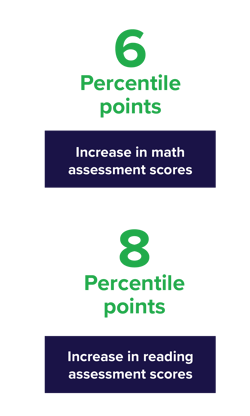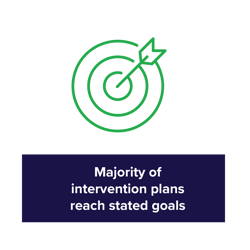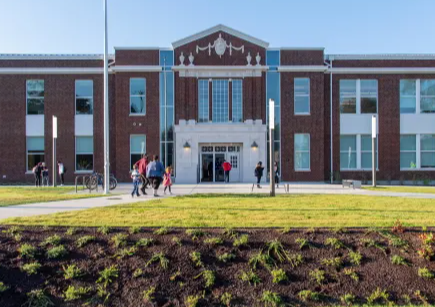What if you could take the guesswork out of evaluating a program for your district and schools? Imagine a solution that doesn’t just claim success but proves its impact through rigorous evaluation so you can feel confident it will make a difference for your students.
A recent independent study from LearnPlatform does just that, showing that Panorama Student Success improves students’ math and reading scores and meets the Every Student Succeeds Act (ESSA) Level II standards of evidence.
Watch the webinar: Improving reading and math scores with Student Success
Student Success is a multi-tiered system of supports (MTSS) platform. It combines academic and behavioral data from multiple sources into a comprehensive view of your students, schools, and district. With insights in one place, it empowers educators by streamlining intervention planning and progress monitoring.
In this article, we will:
- Examine the criteria set by ESSA for evaluating the effectiveness of edtech tools
- Explore the LearnPlatform study of Panorama Student Success
- Learn how using Student Success affects student achievement
What are ESSA and the Standards of Evidence?
ESSA is the law governing the United States’ K–12 public education policy. The act focuses on equity and holds schools accountable for student success. It emphasizes equal opportunities, access to quality education, and improving learning outcomes for all students.
At a high level, the law outlines assessment, accountability, communication, reporting, and funding requirements for states and local education agencies (LEAs). ESSA also outlines the following standards to encourage states and LEAs to make evidence-based decisions on adopting solutions and strategies.
- Level IV
Solutions that meet these requirements exhibit a research-based logic model for why the tool should have a positive impact. - Level III
To meet these requirements, solutions must show a positive impact through a correlational study at one or more sites (e.g., schools or districts). - Level II
This level requires solutions to show a positive impact through a rigorous study at multiple schools or districts using quasi-experimental methods common in educational and other types of social research. - Level I
To earn this certification, a solution must show a positive impact through a randomized trial at multiple sites.
The Independent Student Success Study
LearnPlatform by Instructure, an independent evaluator, studied the impact of Panorama Student Success on learning to satisfy ESSA standards.
The study looked at 80,000 students across 600 schools to see if using Student Success more often and using it for intervention planning boosted their scores.
Based on end-of-year Northwest Evaluation Association’s (NWEA) Measure of Academic Progress (MAP) math and reading scores, the study showed that using Student Success positively impacts student outcomes.
As such, this study met ESSA Level II standards. This work highlights a depth of analysis and proof rarely seen in edtech.
 How High Usage of Panorama Student Success Increases Student Scores
How High Usage of Panorama Student Success Increases Student Scores
The study examined usage patterns across schools in the sample. Through cluster analysis, researchers categorized schools into low, medium, and high usage groups based on unique visitor counts and how engaged each visitor was with the platform.
They found that the more schools used Student Success, the greater gains they saw. Schools with high platform usage saw significantly higher NWEA MAP math and reading performance at the end of the year.
Even modest use of Student Success to support students was associated with up to a six percentile point gain in math scores and up to an eight-point gain in reading scores.
How Using Student Success for MTSS Intervention Planning Boosts Achievement
 Researchers looked at how educators used the platform to plan and implement tiered interventions across academics, attendance, behavior, life skills, ELA, math, science, and social studies. Across all focus areas, the majority of interventions with outcomes tracked on the platform met stated goals.
Researchers looked at how educators used the platform to plan and implement tiered interventions across academics, attendance, behavior, life skills, ELA, math, science, and social studies. Across all focus areas, the majority of interventions with outcomes tracked on the platform met stated goals.
Researchers also examined the impact of using Student Success to plan and track interventions for students who scored below the 20th percentile in fall reading and math screening assessments. They found that when educators used the platform this way, these students often performed better on end-year assessments than similar students without interventions logged in the platform.
For example, with interventions logged on the platform, students in grades 6–12 performed six percentile points higher on spring math benchmark assessments. And with interventions logged on the platform, students in grades 3–5 performed four percentile points higher on spring reading benchmark assessments.
Empowering Districts and Schools
.png?width=250&height=250&name=unnamed%20(8).png) Meeting ESSA Level II standards signifies a commitment to tangible impacts on student outcomes. The evidence also opens doors to more sustainable funding for school districts.
Meeting ESSA Level II standards signifies a commitment to tangible impacts on student outcomes. The evidence also opens doors to more sustainable funding for school districts.
As education evolves, so does Panorama’s dedication to empowering educators with tools that yield measurable results. The study of Panorama Student Success isn’t just a testament to its efficacy. The results offer a blueprint for reshaping student outcomes. And Panorama will continue to invest in ensuring our products and services positively impact learning.
To learn more and read the full ESSA Level II study report, visit our Research page.







